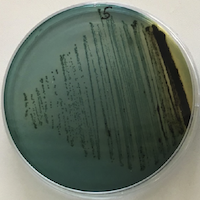Occurrence of Vibrio parahaemolyticus and Staphylococcus aureus in seafood

Submitted: 11 August 2021
Accepted: 2 October 2021
Published: 3 December 2021
Accepted: 2 October 2021
Abstract Views: 1336
PDF: 453
HTML: 7
HTML: 7
Publisher's note
All claims expressed in this article are solely those of the authors and do not necessarily represent those of their affiliated organizations, or those of the publisher, the editors and the reviewers. Any product that may be evaluated in this article or claim that may be made by its manufacturer is not guaranteed or endorsed by the publisher.
All claims expressed in this article are solely those of the authors and do not necessarily represent those of their affiliated organizations, or those of the publisher, the editors and the reviewers. Any product that may be evaluated in this article or claim that may be made by its manufacturer is not guaranteed or endorsed by the publisher.

 https://doi.org/10.4081/ijfs.2021.10027
https://doi.org/10.4081/ijfs.2021.10027



